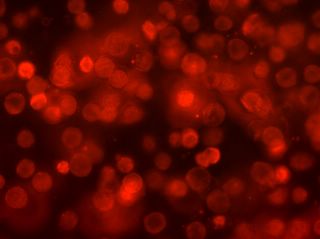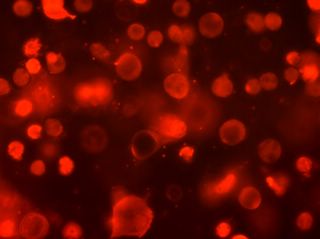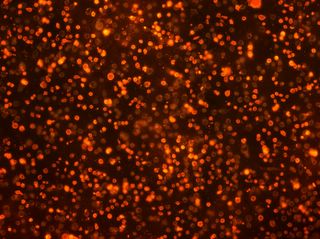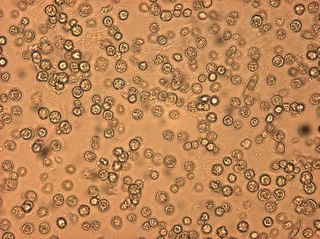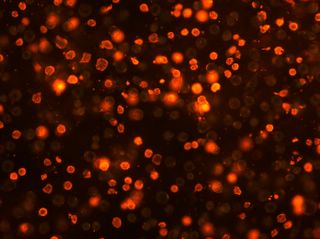Monday, February 14, 2005
Tuesday, February 08, 2005

This is a Haematoxylin and aniline blue. I found a wonderful example of this being used in which it was claimed that elastic fibers stained dark purple, and collagen blue. It turns out that haematoxylin staining is much more complicated that I initially hoped however. According to >this site, haematoxylin is not a dye [and has] little or no affinity for tissue elements and requires an inorganic ion to act as a go between between the dye and the tissue. Well, NO WONDER it didnt work! Apparently a ferric salt can be used in some way (further research is needed here).


Another congo red at 40x. This shot is exactly the same as the last one, except the objective has been moved back a bit. This shows the multi-layered nature of these cells. For the most part, the ones which are against the glass seem to be dividing and strangly shaped while those which are suspended in the ecm are much rounder.


This is alcian blue stain at 40x. Apparently it is traditionally used to stain mucopolysaccharides or glycosaminoglycans, and is a cationic dye which is attracted to anionic sites on polysaccharides.

More Staining (now with the nicer scope)
Using the same fixing/staining procedure as in the last set of stains, six new staining experiments were carried out. This time the photos were taken using a camera mounted on a somewhat higher end microscope. All staining and photographing was done on 2-03-2005. Sample pictures are above.

